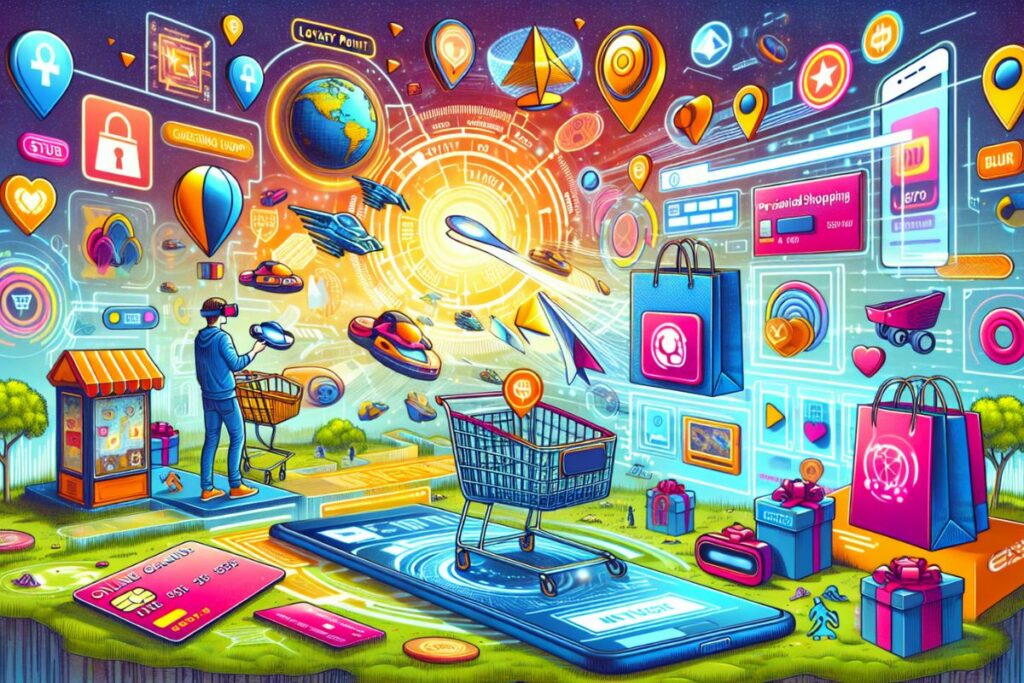How retail brands can master the customer journey
The customer journey is long and full of numerous touchpoints, each of which is both an opportunity for brands to impress customers and a chance to lose them. Online, where customers’ attention is pulled in any number of directions simultaneously, the bottom line is offering your customers the smoothest, easiest, and most customer focused experience possible. More specifically, a Forrester study shows a whopping 79% of customers expect ecommerce brands to make their experiences simpler and faster. If brands want to stand out in the modern landscape they’re going to have to invest in connecting with customers in the long term. By aligning with your customers values in a genuine way, and by providing real value to their lives, retail brands can foster unbeatable loyalty. Here are the steps you can take along the customer journey to ensure that you’re becoming indispensable to your customers.
Be where your customers are
Your customer’s first impression of your brand is arguably the most important; it will be the lens through which they view everything that you subsequently offer them.
- The classics: There are many safe strategies for advertising your brand; search and social have become the bread and butter for ecommerce brands in recent years, however, it may be worth considering alternative strategies, not to replace the aforementioned two but rather to supplement your overall advertising and marketing efforts.
- New can be better: These “alternative strategies” can take a number of forms from text message advertising, to making your messages relevant to each individual customer, or even acquiring customers by presenting your offers on the confirmation pages of ecommerce websites. Pursuing alternative forms of getting your brand and your message in front of consumers, at opportune times or in ways that show them you’re paying special attention, can be an effective way to start off on the right foot.
Following that initial good experience, consumers these days are taking more of a personal interest in the views and beliefs of the brands that they shop from; buying with their conscience rather than just with their wallet. But what does this mean for retail brands? Brands can take this in a few ways, but the most impactful in the minds of consumers tend to be sustainability, activism, and charitable contributions.
- Have a voice: Activism and charitability are clear; consumers want to shop at brands that authentically share their beliefs and aren’t afraid to voice their opinion and back it up monetarily.
- Go green: Sustainability is arguably the most important of these, as sentiments against wanton consumption with no regard for the planet have only continued to grow in recent years.
Certifications such as registered B Corporation, Fair trade certified, Cradle to Cradle, or a variety of others depending on industry can help assure your customers that you care about the planet as much as they do. Additionally, this plays into the paradox of choice, where customers can find it difficult to make a purchase when shown too many products. If instead of being offered twenty things, they’re offered three options that are more relevant to them, it will cut down on resource waste and make customers’ decisions easier, helping both the environment and the customer to feel pride and confidence in their purchase.
Make sure you have a red carpet, then roll it out.
After the customers’ introduction to your brand, hopefully through some means that will interest or apply to them, they will reach your website and begin shopping. The tantamount piece here is site reliability.
- Lock it down: Consumers spend hours online everyday, and bounce from website to website, with the expectation that the website is going to run and function well, and there isn’t going to be any hiccups or bumps in the road as they shop or go about their day. If your site has issues with loading times, lags, or can’t handle a certain amount of traffic, then your site is going to stick out in a very bad way, and become memorable not for your products and the customer experience, but for being an annoyance.
Once you have a reliable site that is up to the standards of the modern consumer, the next thing to focus on are the amenities that are going to make them connect with your brand. In 2022 that can look a few different ways, but for ecommerce the biggest hurdle to try and overcome is the issue of distance. The customers shopping on your site aren’t going to be able to see what your products look like in their homes or feel like in their hands, and while this issue can’t be completely avoided, over the course of the pandemic several brands found clever ways to still give their customers a better view of their products than a simple picture.
- Virtual mediums: The first of these is the virtual showroom, which could take the form of a livestream, private appointment, or interactive experience. This allows your customer to get a much more personalized look at your products, and can help convert hesitant onlookers into confident buyers.
- Augmented: Another very helpful use of technology that can be used to show off your products is augmented reality. This allows customers to visualize what your product would look like in their own home or space through the use of 3D models and their smartphone camera. Additionally, it gives your customers a certain “wow” factor by proving you’ll go above and beyond to provide them with all the information they need for making an informed purchase.
Reel them in!
Once you have a customer with your item in their cart, the biggest blocker now is making sure they actually go through with the purchase. Shopping cart abandonment is the bane of all online retailers, so it’s in your best interest to do everything you can to make the buying process as easy, accessible, and smooth as you possibly can.
- Every channel: Omnichannel carts is one way to ensure that your customer won’t forget that they want to make a purchase from your brand, whether its on mobile, desktop, or through social media, if you make sure that you have the full picture of where your customers shop online, you can be sure that you’ll be where they are.
- Every way to pay: People shopping online like to shop in a variety of different places, but they also like to pay in a variety of different ways. This could be by creating an account, checking out as a guest, paying with a credit card or PayPal, paying in installment, buy now, pay later, or simply paying in one click. If you’re able to make sure that your customers have as many options available to them so there is nothing stopping them from checking out, you can ensure that when they reach the payment input screen that they’ll be purchasing your product.
Throughout this whole buying journey, it’s important that you’re tailoring the experience to each individual customer. No one wants to be seen as just a number, so by providing each customer with an experience that is relevant to them, you can better foster their loyalty to your brand.
You’ve made the sale, now what?
The moment just following the confirmation of a purchase can be very powerful if utilized correctly.
- During this moment, customers are especially happy due to having just made a purchase, and so they are incredibly receptive to receiving relevant offers. This can be a good way to provide your customers with increased value, even after they’re done purchasing from you (for the time being).
- Leverage data: The data from each of these purchases can be integral as well, as the culmination when leveraged properly can be used to learn about buying trends and the seasonality of your items.
- Manage inventory: Additionally, many are investing in modern digital architectures that allow and enable the rapid integration of a variety of solutions that can help streamline their supply chains and aiding areas such as inventory management. This allows for fewer “out of stock” messages disappointing your customers, and reduced warehouse costs. Overall this effort improves the experience of the customer, while ensuring that the dollars you invest into your product are only going towards those that will sell, rather than those that will remain on a shelf, or need to be heavily discounted in order to move.
Closing thoughts
The ecommerce buying journey can be difficult to get a handle on, especially because there are so many opportunities to fail. However, if you focus on the customer, and become indispensable to them by providing them with real value and experiences that are memorable in a good way, then they will reward you with loyalty and much higher lifetime value. Want to find out more? Reach out to our experts now.


















